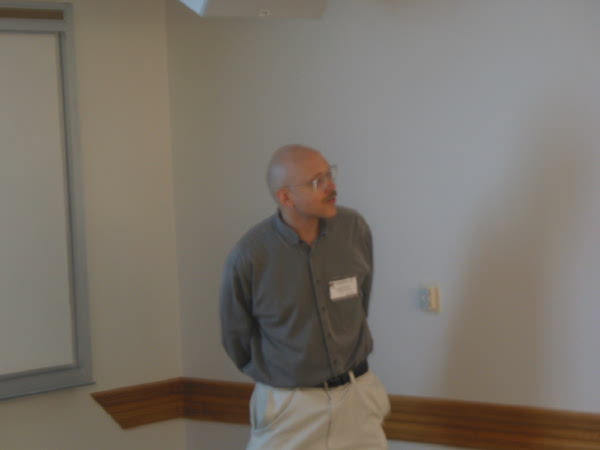Research Activities > Programs >
Incompressible Flows 2006>
Gregory Eyink
|
|

CSIC Building (#406),
Seminar Room 4122.
Directions: home.cscamm.umd.edu/directions
|

Incompressible Fluid Turbulence & Generalized Solutions of Euler
Equations
Gregory Eyink
Department of Applied Mathematics & Statistics,
Johns Hopkins University
|
|
Abstract:
Experiments and numerical simulations show that
energy dissipation in incompressible fluid
turbulence tends to a positive value in the inviscid
limit (infinite Reynolds number). Lars Onsager
(1949) proposed an explanation for this phenomenon
in terms of energy cascade for certain singular
solutions of Euler equations.
This proposal can be
fruitful both for turbulence theory, by suggesting
novel results that can be tested empirically, and
also for theory of partial differential equations,
by giving important hints on the character of Euler
solutions in the zero-viscosity limit. We shall
review some of the classical ideas on turbulent
energy cascade and their current status within
rigorous theory of PDE's. In particular, we shall
discuss old ideas of Geoffrey Taylor (1937) on the
role of vortex line-stretching in generating
turbulent energy dissipation. Taylor's argument was
based on a statistical hypothesis that material
lines in a turbulent flow will tend to elongate, on
average, and appealed to the Kelvin Theorem (1869)
on conservation of circulations. For smooth
solutions the Kelvin Theorem for all loops is
equivalent to the Euler equations of motion, but we
shall present rigorous results which suggest that
the theorem breaks down in turbulent flow due to
nonlinear effects. This turbulent "cascade of
circulations" has been verified by
high-Reynolds-number numerical simulations. We
propose another conjecture, that circulations on
material loops may be martingales of a generalized
Euler flow (in the sense of Brenier and Shnirelman).
This hypothesis introduces an arrow of time,
according to whether the martingale property holds
in the past or in the future. We shall show that
this property has a close analogue in the "Kraichnan
model" of random advection, which accounts for
anomalous scalar dissipation in that model. The "Kraichnan
model" is also known to probabilists as a
generalized stochastic flow and its basic features
have been put on a rigorous footing by Le Jan and
Raimond (2002, 2004). We propose a geometric
treatment of this model, formally as a diffusion
process on an infinite-dimensional semi-group of
volume-preserving maps. We expect that this model
has great potential to provide further insight into
the nature of incompressible, high Reynolds number
flows.
[LECTURE SLIDES]
|
|
|
